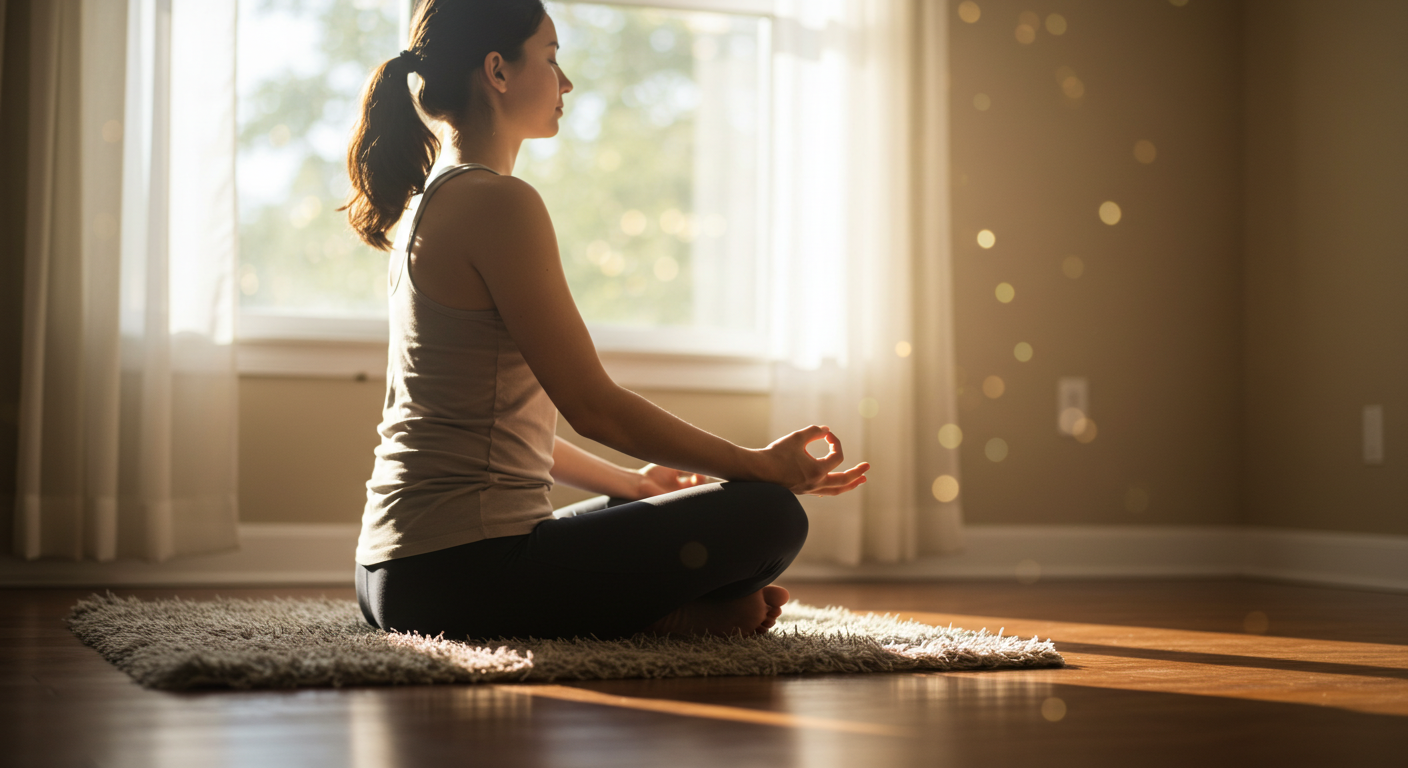Do you ever feel your heart pounding a little too fast, or your mind racing with worry? If so, you’re not alone. According to the National Institute of Mental Health, nearly 20% of U.S. adults experience an anxiety disorder each year. The good news is that there’s a simple, time-tested tool that can help you find relief: Meditation for anxiety relief. In this article, we’ll explore how meditation works, which techniques are most beneficial, and how you can start right away—even if you’ve never tried meditating before.
What We'll Cover
What Is Meditation?
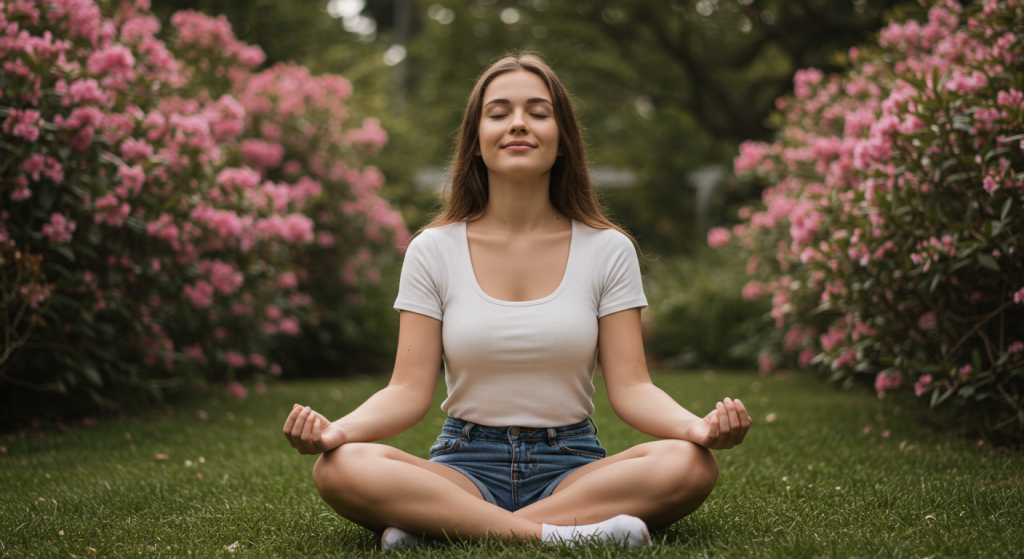
Meditation is a mind-body practice that encourages relaxation, focus, and heightened awareness. By purposefully directing your attention inward, you learn to observe and eventually calm the stream of thoughts that often triggers anxiety.
While meditation practices vary, they generally involve:
- Concentration on a specific object, sound, or thought
- Mindful awareness of your body and surroundings
- Relaxation through deep breathing and gradual muscle release
A 2018 study published in the National Institutes of Health database suggests that meditation can lower the production of stress hormones, helping people better manage anxious feelings.
How Meditation Helps Manage Anxiety

Anxiety often arises from worries about the future or regrets about the past. Meditation teaches you to stay in the present moment, which can reduce rumination and stress. By grounding yourself in the here and now, you give your nervous system a chance to reset, releasing tension and promoting a sense of calm.
- Reduced Stress Response: Regular meditation can moderate the body’s “fight-or-flight” response, which is often overactive in anxiety.
- Better Emotional Regulation: Meditation trains your brain to acknowledge emotions without becoming overwhelmed.
- Improved Focus: Concentration-based practices boost your attention span, making it easier to redirect negative thoughts.
Popular Meditation Techniques for Anxiety
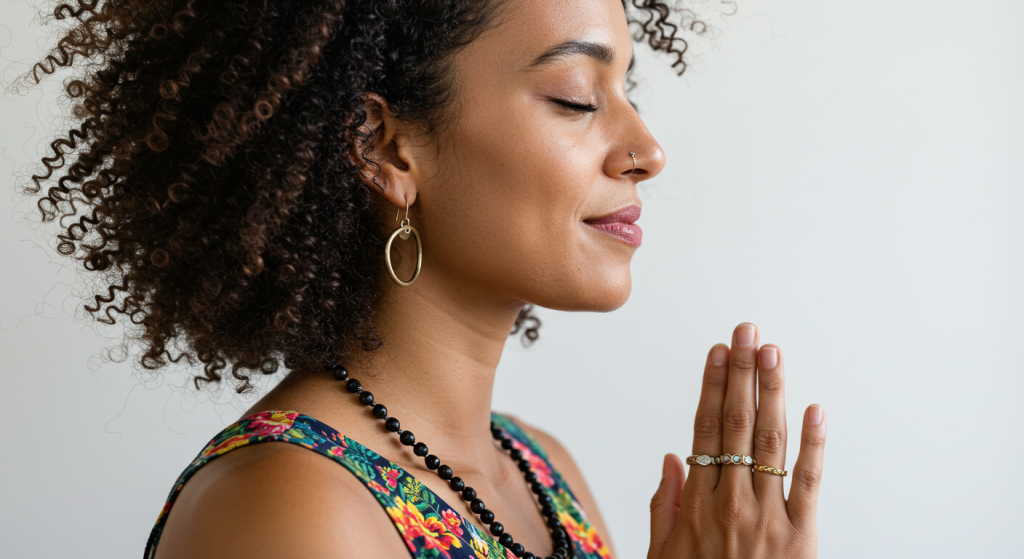
Not all meditation practices are the same. Different techniques may work best for different people. Below is a quick overview of some common methods:
| Technique | Description | Ideal For | Suggested Duration |
|---|---|---|---|
| Mindfulness | Observing thoughts, feelings, and sensations without judgment | Beginners and those who prefer open awareness | 5–20 minutes daily |
| Focused Attention | Focusing intently on one thing (e.g., breath, mantra, candle flame) | Individuals who like structure and guidance | 5–15 minutes, gradually increasing |
| Guided Imagery | Visualizing calming scenes or images led by audio or a mental script | People who respond well to visualization | 10–30 minutes |
| Body Scan | Systematically focusing on each part of the body to release tension | Those with chronic stress or tension | 5–10 minutes |
| Loving-Kindness | Repeating phrases of goodwill toward oneself and others | Enhancing empathy and self-compassion | 10–15 minutes |
People Also Ask: “What Kind of Meditation Is Best for Anxiety?”
In truth, there’s no single “best” meditation for everyone. Your personal preferences and lifestyle play a huge role in determining which technique suits you. If you’re just starting out, consider trying a few guided mindfulness apps, or enroll in a local workshop. Experimentation will help you find the style that resonates most with you.
Getting Started Step by Step

Step 1: Set the Scene
Choose a quiet, comfortable space. Turn off unnecessary electronics or anything likely to interrupt your session. A softly lit room or natural light can help set a calming tone.
Step 2: Assume a Comfortable Posture
Sit upright in a chair or cross-legged on the floor. Keep your spine neutral and your shoulders relaxed. If sitting is uncomfortable, lying down is okay—just be mindful not to doze off.
Step 3: Start with a Simple Breathing Exercise
Focus your attention on the sensations of your breath. Inhale deeply through your nose, counting slowly to four. Hold your breath for a count of seven, then exhale through your mouth for a count of eight. This is known as the 4-7-8 technique, a popular breathing method that helps soothe anxiety.
Formula Example (4-7-8 Breathing):
- Inhale (4 seconds): Count “1…2…3…4…”
- Hold (7 seconds): Count “1…2…3…4…5…6…7…”
- Exhale (8 seconds): Count “1…2…3…4…5…6…7…8…”
Repeating this simple formula two or three times can quickly calm your mind and reduce anxious feelings.
Step 4: Transition into Your Chosen Meditation
Move seamlessly into mindfulness, body scan, or any other method you prefer. If intrusive thoughts arise, gently acknowledge them, and then bring your attention back to your chosen focus—whether that’s your breath, a mental image, or a mantra.
Step 5: Practice Consistency
Short, frequent sessions (5–10 minutes daily) can be more effective than sporadic, lengthy sessions. Consistency helps build mental discipline and makes meditation a habit, which is crucial for lasting anxiety relief.
Additional Tips for Success
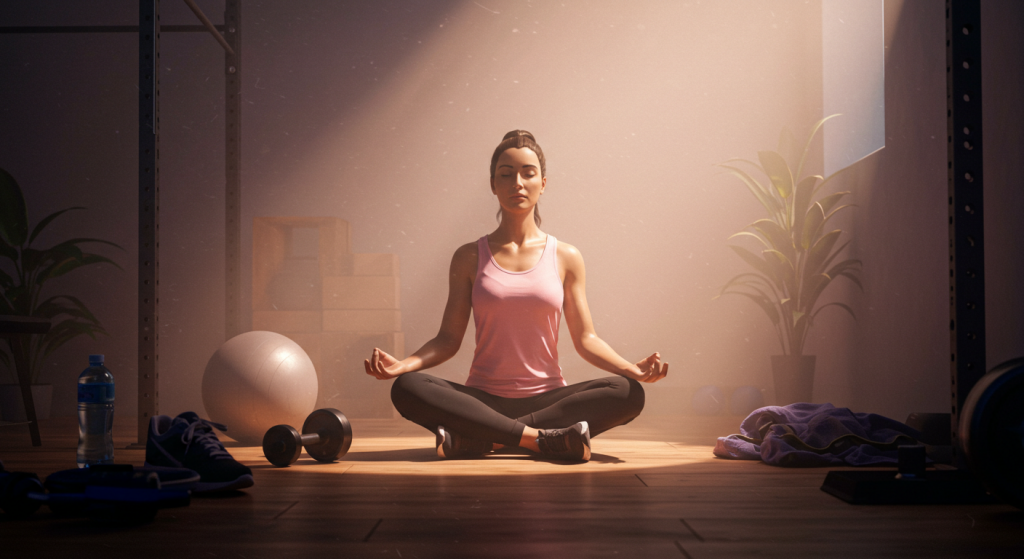
- Set Realistic Goals: Start with a few minutes a day. Even one minute of deep breathing can make a difference.
- Use Technology Wisely: Guided meditation apps can help you stay on track, offering audio prompts and timers to keep you focused.
- Combine with Other Therapies: Meditation complements physical exercise, talk therapy, or medical treatments. Always consult a healthcare professional for personalized advice.
- Stay Patient: Results can be subtle at first. Over time, many people report feeling more centered, less reactive to stress, and better able to handle daily challenges.
People Also Ask: “Is 10 Minutes of Meditation Enough for Anxiety?”
Absolutely. If you’re consistent, meditating for even 10 minutes daily can yield noticeable improvements in how you handle stress and anxious thoughts. Research in the Journal of the American Medical Association shows that regular short meditations can significantly improve mental well-being.
Common Obstacles and How to Overcome Them
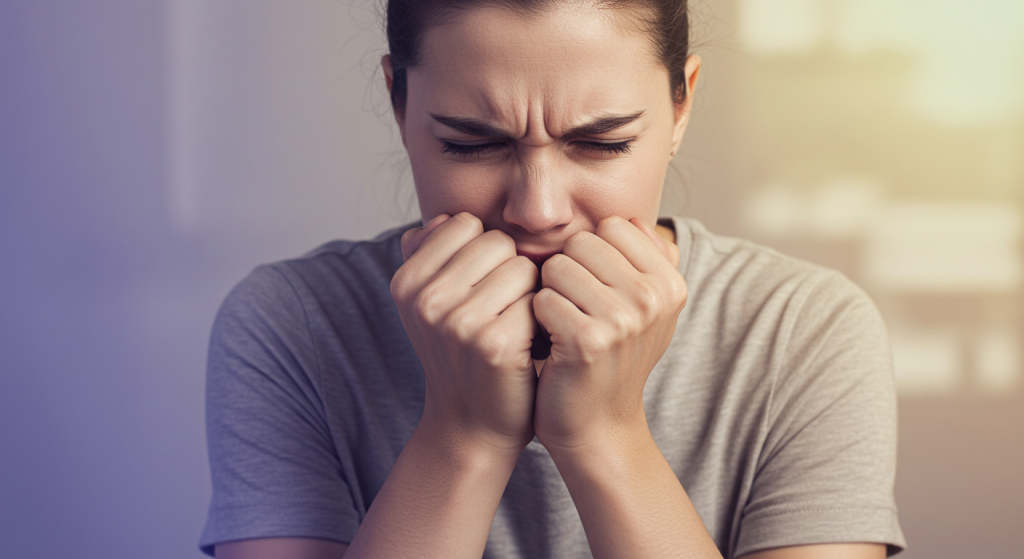
- Wandering Thoughts: It’s normal for your mind to drift, especially at the beginning. Each time you notice a thought, calmly bring your attention back.
- Time Constraints: If your schedule is packed, try “micro-meditations” of 1–2 minutes during breaks.
- Physical Discomfort: Adjust your posture, use cushions, or try a different position. The key is to stay relaxed but alert.
- Impatience: The benefits of meditation for anxiety relief usually grow with consistent practice. Think of it like learning a skill—you get better with each session.
Integrating Meditation into Your Daily Routine
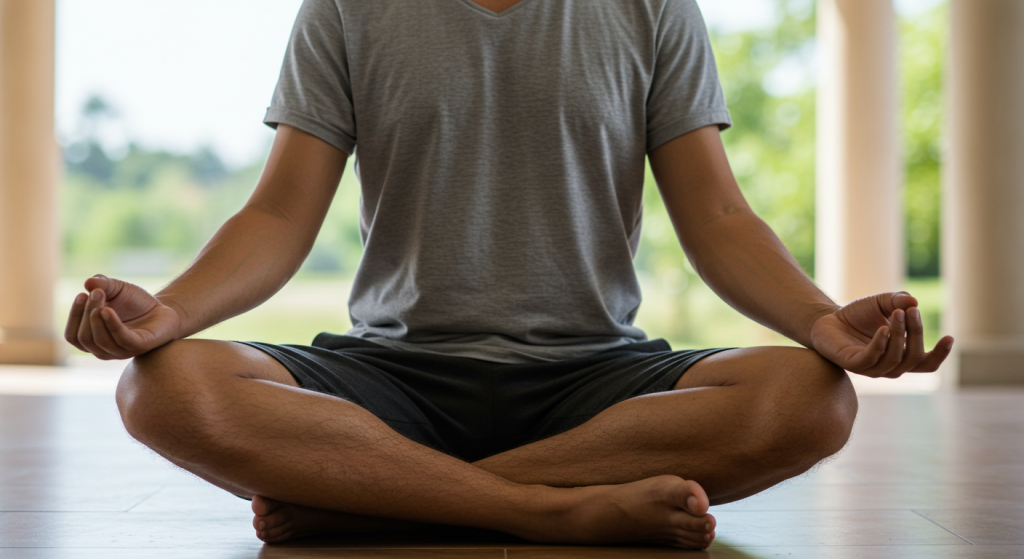
Meditation is more than just a practice you do once a day. It can become a way of life. Here’s how to seamlessly incorporate it into everyday activities:
- Mindful Morning Routine: Focus on the scent of your coffee or the feeling of water on your skin during a shower.
- Walking Meditation: If you have a lunch break, take a slow, mindful walk. Notice how your feet connect with the ground.
- Pause & Breathe: Before reading emails or answering calls, take a few seconds for a deep breath.
- Evening Wind-Down: Spend the last few moments of your day in gratitude or loving-kindness meditation.
Evidence and Real-Life Impact
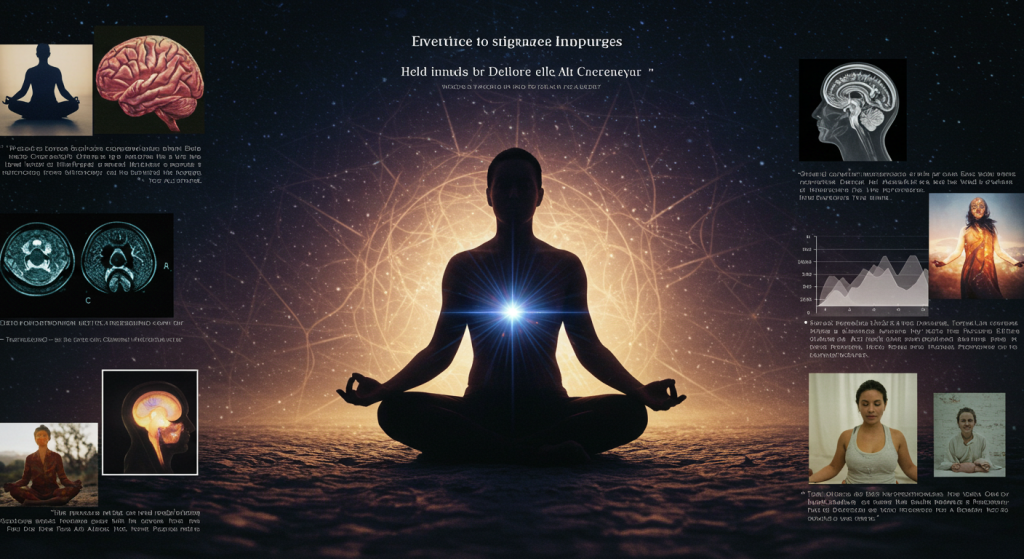
Scientists have long studied the effects of meditation on anxiety, stress, and mental health. A 2017 meta-analysis featured in the US National Library of Medicine reported that participants who practiced meditation regularly showed:
- Lower markers of stress (cortisol levels)
- Enhanced emotional regulation
- Fewer symptoms of anxiety and depression
Beyond the studies, countless individuals attest to feeling more relaxed and resilient after integrating meditation into their daily lives. Whether it’s finding the mental space to handle a tough day at work or feeling more present during family time, the impact of consistent practice can be transformative.
Conclusion
Meditation isn’t a quick fix, but it’s a proven way to cultivate a calmer, more balanced mind—making it a powerful solution for those seeking anxiety relief. Even a few minutes each day can help you break free from the cycle of anxious thoughts. Over time, you’ll notice increased emotional stability, better focus, and a greater sense of control in challenging situations.
Your Next Steps:
- Pick a simple meditation technique (mindfulness, guided imagery, or body scan).
- Devote just five minutes a day to intentional practice.
- Gradually increase your session length.
- Combine your new habit with other healthy lifestyle choices, such as regular exercise and good nutrition.
Remember that you’re not alone on this journey. If you need more guidance, don’t hesitate to explore professional help, community classes, or even online support groups. With patience, persistence, and the right resources, meditation for anxiety relief can become one of your most valuable tools for lasting well-being.
The responses below are not provided, commissioned, reviewed, approved, or otherwise endorsed by any financial entity or advertiser. It is not the advertiser’s responsibility to ensure all posts and/or questions are answered.
